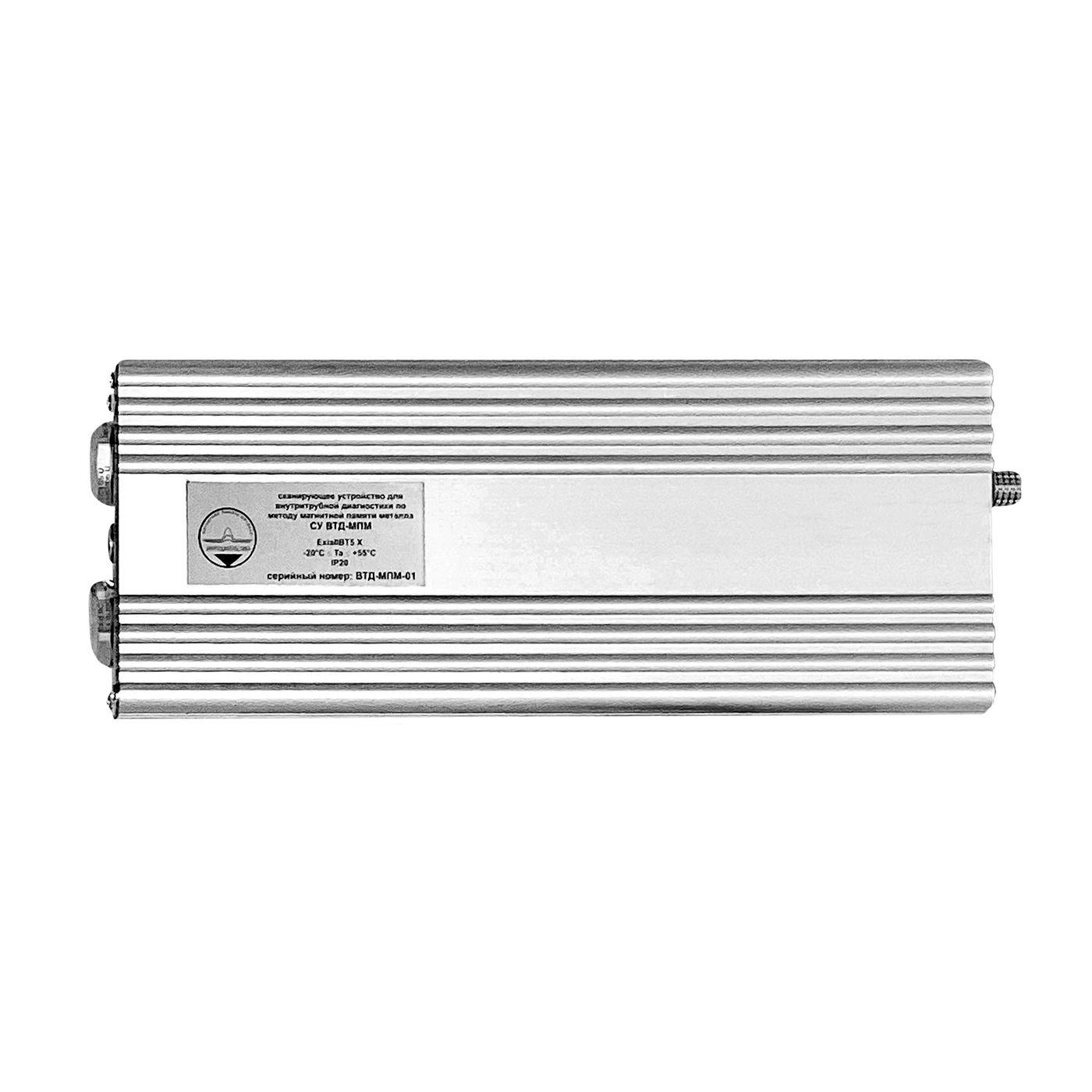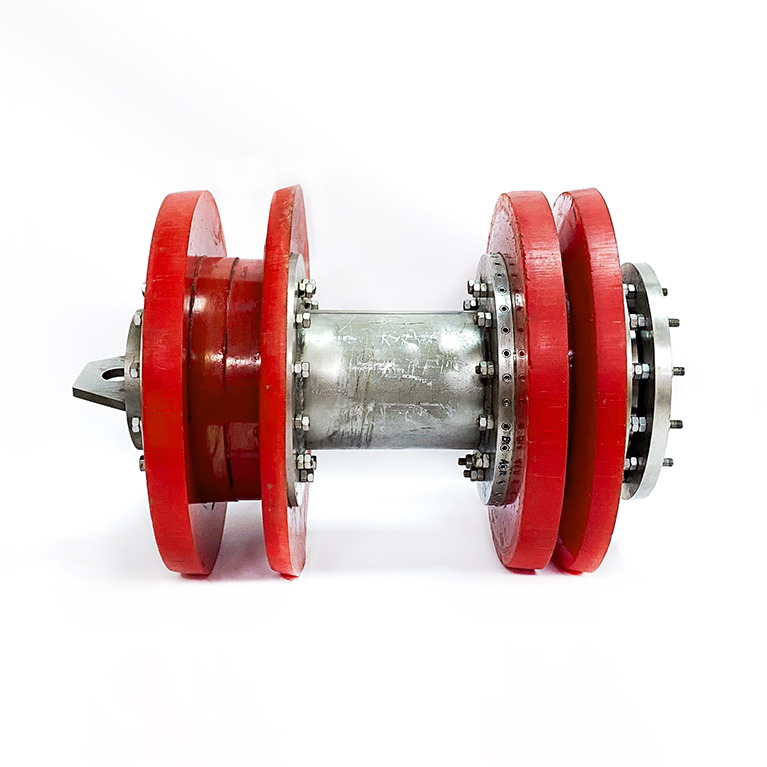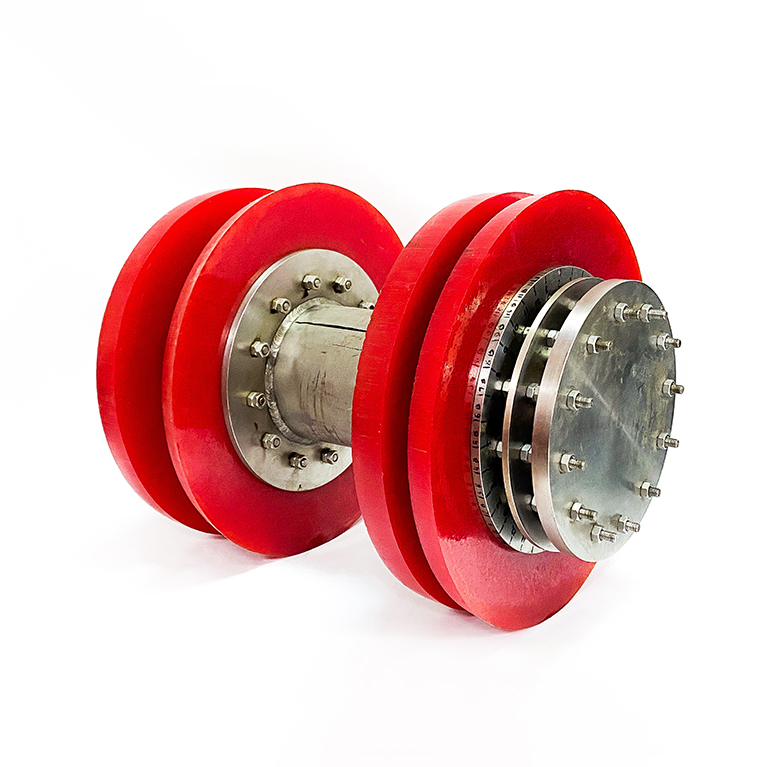Scanning device ILI‑MMM
The ILI-MMM SD is manufactured in a sealed projectile type enclosure used during oil pipelines cleaning. General view of ILI-MMM SD coupled with a search piston is shown in the photo. The scanning device, moved inside the pipeline under the transported medium pressure using flux-gate sensors installed uniformly around the disk circumference, measures the self-magnetic stray field (SMSF) intensity, which characterizes the stress-strain state of the pipeline. Information recording is performed automatically in the “timer” mode. At that, the ILI-MMM SD travel time is recorded every 4-5 km of the route.
Advantages of the developed scanning device for ILI using the MMM method compared to the known inspection devices:
- no artificial magnetization, since the natural magnetization of pipes formed under the conditions their manufacture and operation is used;
- ensuring the pipeline's actual stress-strained state control and detection of stress concentration zones – sources of damages development;
- possibility to assess the developed damages (defects) by the degree of their hazard for further operation;
- possibility to using the complex without a length counting device (encoder) provided uniform speed of the ILI-MMM SD travel is ensured;
- availability of measuring and recording device, self-contained power supply, as in the standard in-line inspection complex, but at the same time, simplified design due to elimination of the use of artificial magnetization devices;
- SMSF measurement at some distance from the internal pipeline wall without losing the quality of the recorded information.
Inspection is performed after the routine pipeline cleaning from paraffin deposits with the scanning device launching through the launch chamber.
After passing through the inspected pipeline section, the ILI-MMM SD is removed from the receiving chamber. The recorded information is transmitted to the computer using an interface cable connected to the ILI-MMM SD directly on the object of inspection.
Processing and analysis of the inspection data is performed using the "MMM-System" program.
Based on the analysis results, a table with stress concentration zones classification for the base metal and welded joints by three categories of damages development hazard is compiled.


